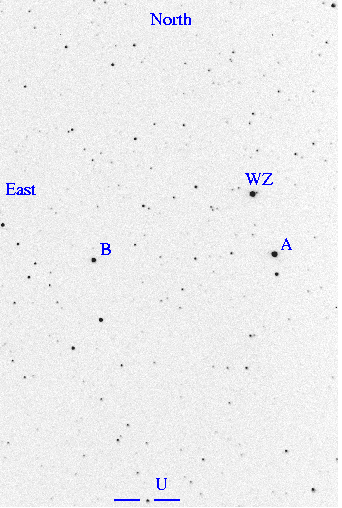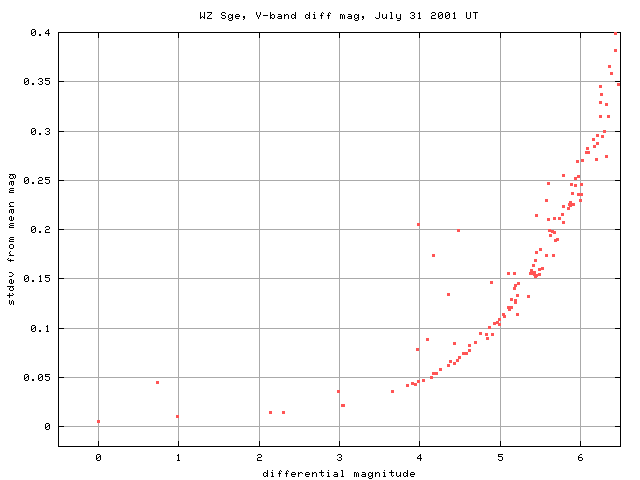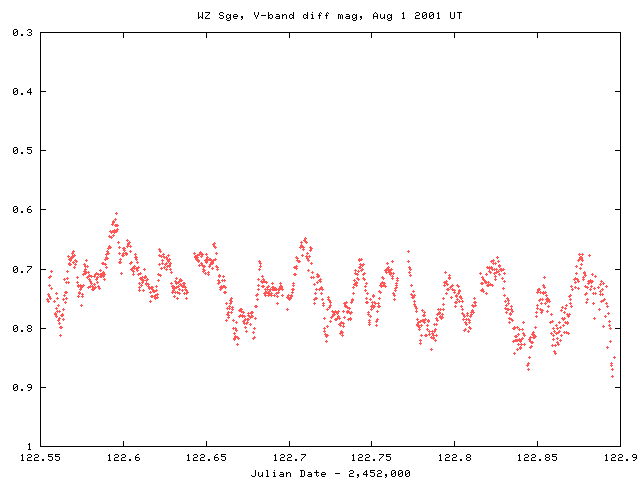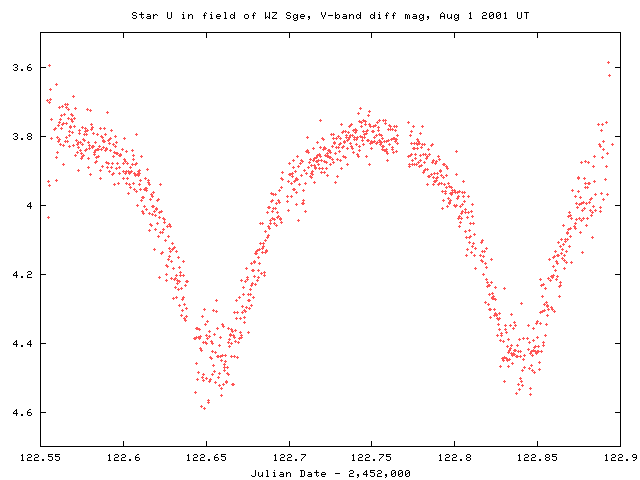
On the night of Aug 1, 2001 UT, a series of observers --

We subtracted dark current from the images and divided by a median twilight sky flatfield. We ran software to detect all stars more than 4 sigma above the sky, then measured the light from each star within a circular aperture of radius 8.8 arcseconds.
The weather started out mediocre, with haze and some high clouds. However, it improved as the night went on, and the skies were clear at the end.
We worked from sunset to sunrise, gathering 1198 images of the field. We fed all raw instrumental magnitudes of 137 stars on those images into a program which implemented Honeycutt's inhomogeneous ensemble photometry technique. The solution gave most weight to the bright stars "A" and "B" (marked above). The standard deviation from the mean magnitudes in the solution are shown below, as a function of differential magnitude.

The solution placed the mean magnitude of star "A" = GSC 1612.1830 = HD 191083 at zero, and star "B" = HD 351517 at 0.980. The scatter for these bright stars was:
star mean stdev
A 0.0 0.005
B 0.980 0.010
We used star "B" as a check star to detect errors due to clouds or poor images (which clearly were present in the entire night's run). We discarded any image in which star "B" differed from its mean magnitude by more than +/- 3 times its standard deviation.
The final result is 1169 measurements of WZ Sge over a span of seven and a half hours. Here is the light curve:

You can download an ASCII text file with the measurements:
The file has some comments at the top, followed by data lines with 4 numbers per line, like this:
Jul_27.06510 2117.56510 2117.56977 0.046
The columns are:
RA = 20:07:55.40
Dec = +17:31:17.4
During the course of our run on WZ Sge, we found that this star also varied, with a period of about 9 hours and an amplitude in V-band of 0.6 mag peak-to-peak:

Last modified 8/22/2001 by MWR.